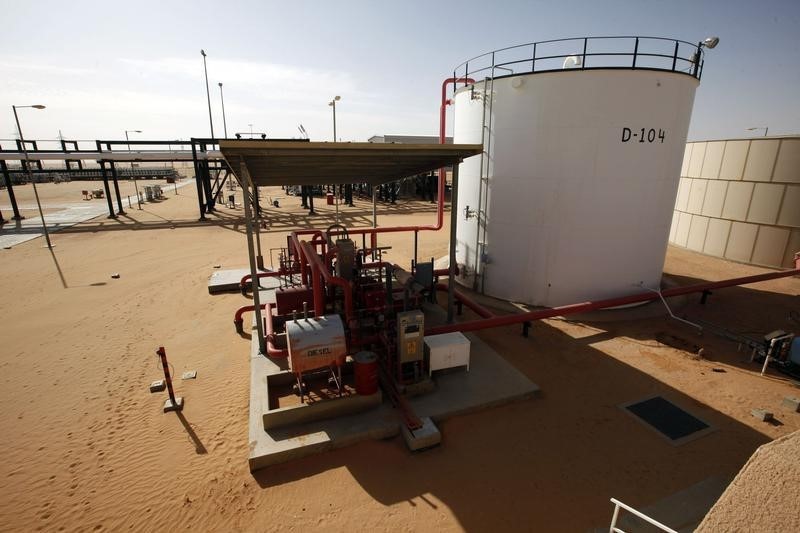By Ayenat Mersie
NEW YORK (Reuters) - The U.S. oil export infrastructure is straining to keep up as the country's crude oil exports hit new highs and China snaps up more of it than ever before.
U.S. crude production has surged to a record 10.7 million barrels a day, driven largely by growth from the Permian shale patch in West Texas, which pumps more than 3 million bpd.
However, the infrastructure to move it abroad is lagging, even as U.S. prices are well below the Brent benchmark, a discount that sits just off three-year highs at $8.09 per barrel.
U.S. crude exports peaked at 2.6 million bpd two weeks ago, but are expected to keep rising.
No definitive data are available on how much crude the United States can export, though analysts estimate a nationwide capacity of 3.5 million to 4 million bpd. Most terminal operators and companies do not disclose capacity, and the U.S. Energy Department does not track it.
"So far, export capacity is keeping pace, but we are walking a tightrope," said Bernadette Johnson, vice president at DrillingInfo.
That capacity may begin to be tested next month, as Sinopec (SS:600028), Asia's largest refiner, bought a record 16 million barrels, or about 533,000 bpd of U.S. crude, to load in June, two sources with knowledge of the matter said on Wednesday.
For the last six months of available data, ending in February, the United States only exported about 332,000 bpd to China.
Analysts are concerned about how quickly the crude terminals at Gulf Coast ports, many initially designed for imports, can shift to handling exports. Only the Louisiana Offshore Oil Port can handle supertanker exports, but it only started testing in February. The supertankers, known as VLCCs or very large crude carriers, can handle some 2 million barrels of oil - the amount preferred by Asian buyers with bigger ports.
"There's only one dock on the Gulf Coast that can handle a VLCC deepwater, and that's LOOP. And the LOOP has only started to export," said Sandy Fielden, director of research in commodities and energy at Morningstar.
Port of Corpus Christi in Texas is developing its Harbor Island port, which will accommodate 120 VLCCs per year, said Jarl Pedersen, chief commercial officer at the port, with a targeted completion of late 2020.
Kpler, a cargo tracking service, on Thursday estimated that up to 4.8 million bpd can be moved from the top crude-exporting ports of Corpus Christi, Houston, Port Arthur and New Orleans. Their estimate in October was 3.2 million bpd.
PIRA Energy Group put the U.S. overall crude export capacity at 3.5 million bpd, while Morningstar's estimate is 3.8 million bpd at most.
In addition to port constraints, inadequate pipeline space has created a glut of supply in west Texas, pushing the principle cash grade there
"The constraint is really the pipeline coming down from the Permian to Corpus Christi," said Pedersen. However, the ship channel still needs to be deepened, a $320 million project in development with the U.S. Army Corps of Engineers.
